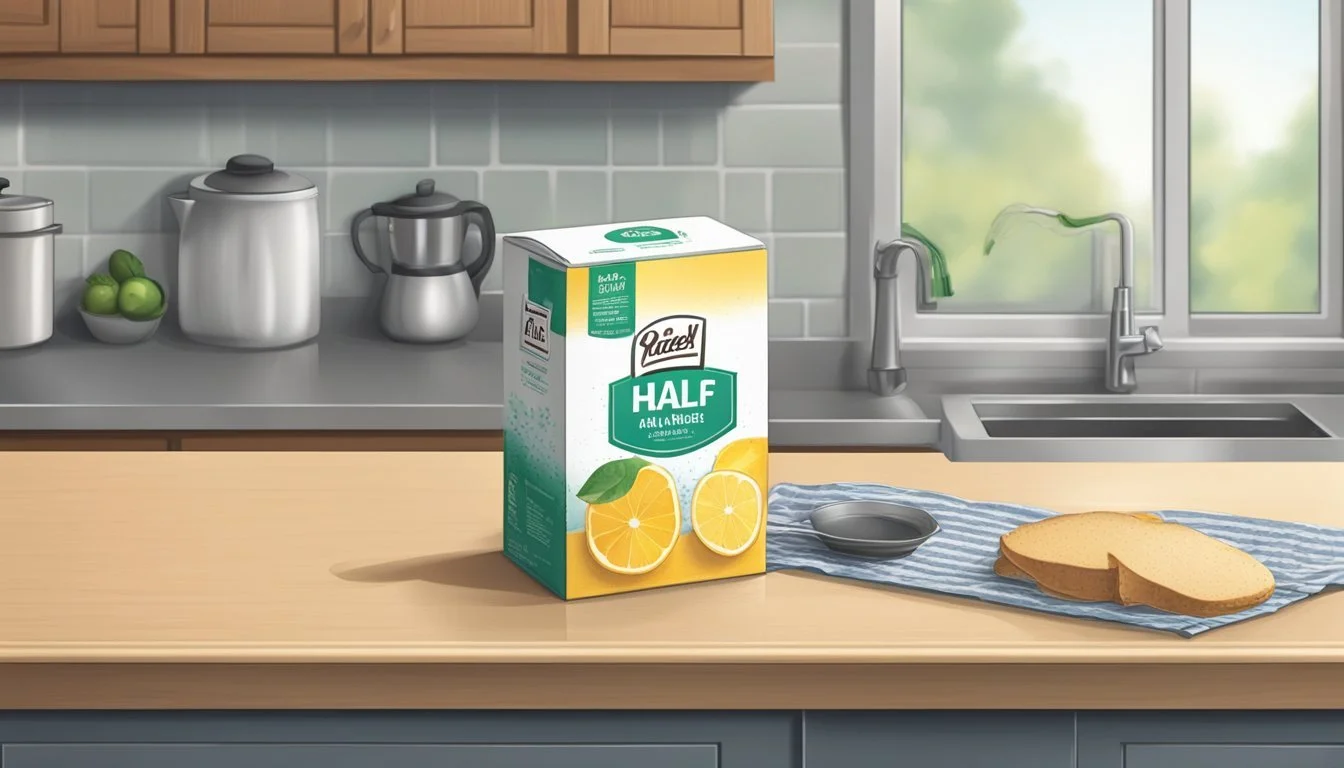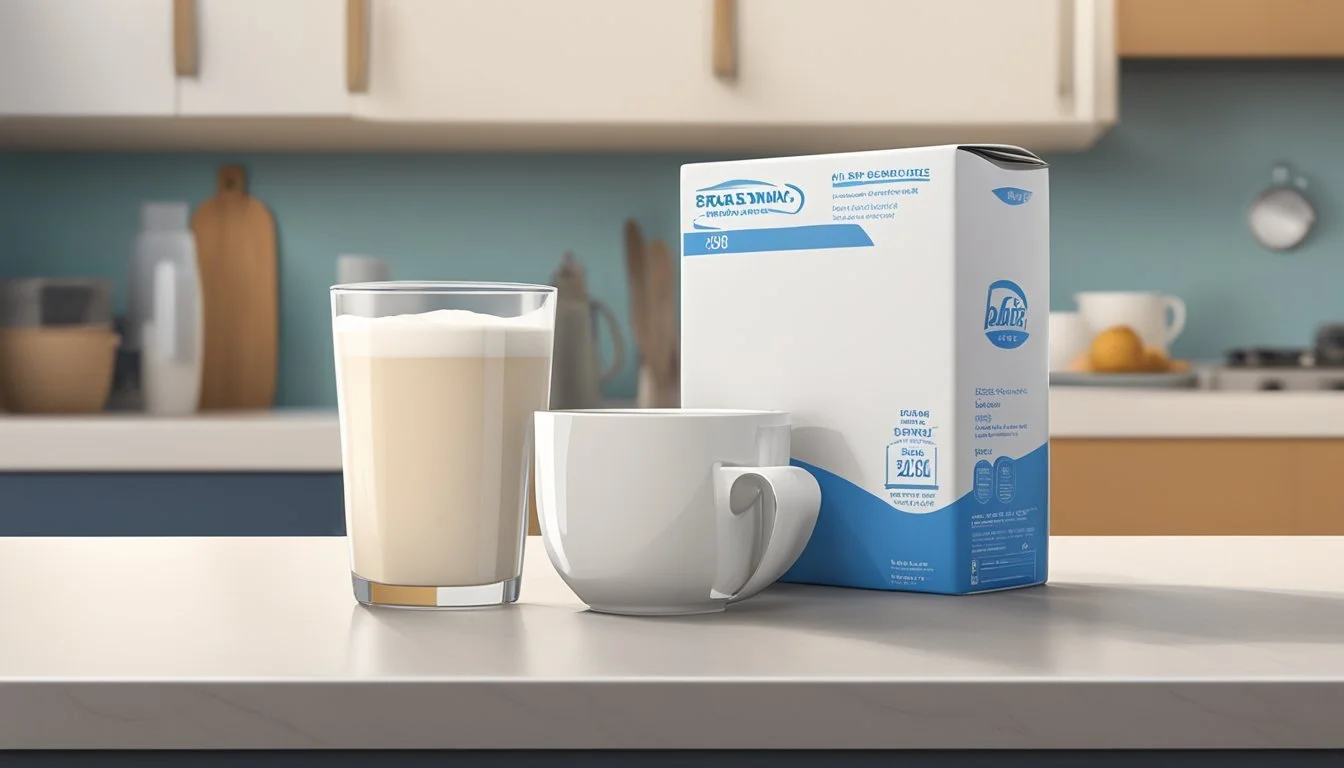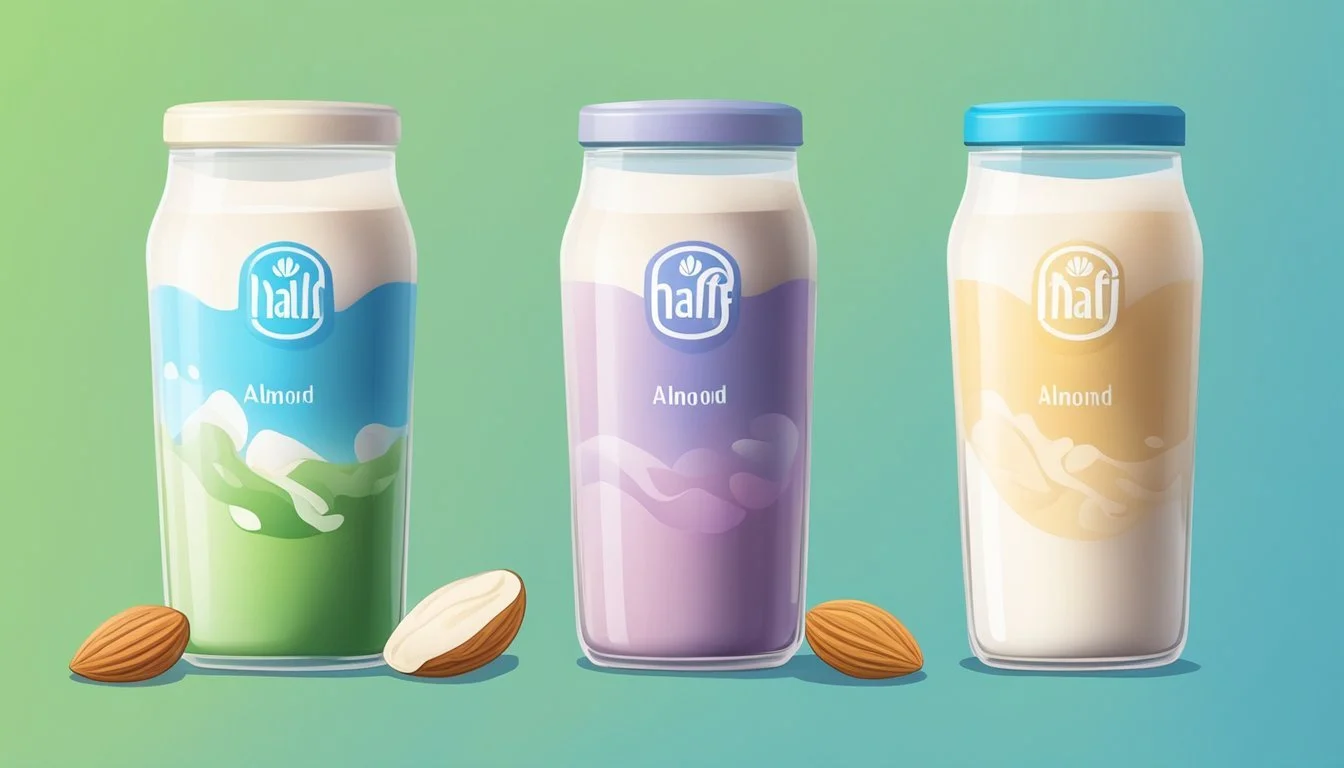Does Half and Half Go Bad?
Understanding Shelf Life and Spoilage Signs
Half and half, a staple in many kitchens, is a simple blend of equal parts whole milk and heavy cream. Like all dairy products, it is subject to spoilage. The shelf life of half and half can vary depending on whether it is opened or unopened, but it generally lasts about 7-10 days in the refrigerator once opened. Refrigeration is critical in preserving its freshness, and the product should be stored at a consistent temperature, typically below 40°F (4°C).
Understanding the signs of spoilage is important to ensure the quality and safety of half and half. Observing changes in texture, smell, and taste can help determine if it has gone bad. Fresh half and half should be smooth and homogenous; once spoiled, it may become curdled or develop a sour smell. Any indication of mold or an off-putting flavor also signifies that the half and half should not be consumed.
While refrigeration slows down bacterial growth, it does not halt it entirely. Consequently, consumers should pay attention to "use by" dates, although it's worth noting that half and half can occasionally remain safe to consume a few days beyond this date if it has been stored properly and remains unopened. To maximize its shelf life, one should always ensure that the half and half is tightly sealed and placed back in the refrigerator promptly after use.
Understanding Half and Half
Half and half is a versatile dairy product common in many households. It is primarily utilized for adding creaminess to coffee or recipes. This section will elucidate the basic composition of half and half, detail the pasteurization process it undergoes, and discuss the variations in fat content that are available.
Composition and Types
Half and half combines whole milk and heavy cream to create a lighter cream option, with a fat content typically between 10% to 18%. There are generally two main types available:
Regular half and half, which is suitable for everyday use such as coffee, teas, and cooking.
Fat-free half and half, which substitutes the cream portion for a mixture that mimics the texture but with significantly lower fat content.
Pasteurization Process
Pasteurization is a crucial process to ensure the safety of dairy products. Half and half is subjected to one of two pasteurization methods:
Traditional pasteurization: Heats half and half to approximately 160°F for a short time to eliminate pathogens.
Ultra-pasteurization: Heats half and half to over 280°F for a brief period, prolonging its shelf life by killing more bacteria.
Each method aims to make half and half safe for consumption by reducing the bacterial load, with ultra-pasteurized having a longer shelf life when unopened.
Fat Content Variations
The fat content in half and half can affect the texture, taste, and suitability for certain uses. It's important to choose the right type based on dietary preferences and cooking needs.
Below is a table illustrating common fat content variations in half and half:
Type Fat Content Regular Half and Half Approx. 10-18% Fat-Free Half and Half Considerably lower
Regular half and half provides a richer flavor suitable for recipes that call for a creamy texture, while fat-free options cater to those seeking to reduce their fat intake.
Shelf Life and Spoilage Indicators
Understanding the shelf life and recognizing spoilage indicators are essential for ensuring the quality and safety of half and half. This section provides a concise overview of how to determine if half and half is still suitable for consumption.
Reading the Expiration Date
Unopened half and half typically has a shelf life that extends 7 to 10 days past the sell-by date if refrigerated properly. Ultra-pasteurized types may last up to six months refrigerated. The expiration date is a reliable first indicator of the product's expected longevity. Once opened, half and half should be used within 3 to 5 days to ensure freshness and prevent spoilage.
Assessing the Quality by Smell and Taste
Before use, one should always assess half and half for a sour smell or strange odor as an immediate indicator of spoilage. Fresh half and half has a mild, creamy scent, while spoiled half and half may elicit a distinctly sour odor. Tasting should only be done if there are no visible signs of spoilage and the smell test does not indicate spoilage. If the taste is sour or off, the half and half should not be consumed.
Visual Signs of Spoilage
The appearance of half and half can signal its quality. Any signs of a curdled appearance, with lumps or chunks, suggest spoilage. The liquid should be homogeneous after a gentle shake, so any separation or discoloration is an indication that the half and half may be spoiled. Consumers should look for consistency in texture and a uniform, light cream color to ensure the half and half is safe for consumption.
Proper Storage Techniques
Ensuring half and half remains fresh and avoids spoilage is a matter of understanding and applying proper storage techniques. Each storage method can extend the shelf life of half and half when applied correctly.
Refrigeration Best Practices
One ought to store half and half in the refrigerator consistently, ideally at or below 40°F (4°C), to maintain freshness. The stability of half and half can be compromised if it's placed in the fridge door, where temperature fluctuations are most common; instead, choose a spot deeper inside where the temperature is more consistent. To prolong its quality:
Keep the carton sealed tightly when not in use.
After use, ensure the lid is closed properly to prevent exposure to air.
The Freezing Option
Though not commonly recommended due to potential texture changes, freezing half and half can be an option for prolonged storage. If one decides to freeze it, use these guidelines:
Pour the liquid into an ice cube tray for easy portioning.
Once frozen, transfer the cubes into an airtight container or plastic bag to prevent freezer burn.
Utilize these cubes for cooking rather than for fresh consumption, as thawing can result in separation and graininess.
Packaging and Containers
For optimum freshness, half and half should ideally remain in its original carton until the time of first use. After opening:
Transfer any unused portion to an airtight container such as a mason jar or a plastic bottle with a secure seal.
Discard the original carton if it cannot be resealed effectively.
Proper storage in suitable containers helps to keep out contaminants and reduce the risk of spoilage.
Usage in Cooking and Beverages
Half and half, a blend of milk and cream, serves as a versatile dairy staple used to enhance both the flavor and texture in various culinary applications. It strikes a balance between milk and heavier creams, bringing a creamy richness without the weight of heavy cream.
Incorporating in Recipes
In the realm of cooking, half and half is a prime choice for creating velvety sauces, soups, and quiches. It thickens dishes more luxuriously than milk, yet with less fat than heavy cream. Chefs often prefer it for its balanced fat content that offers a satisfying mouthfeel without overpowering recipes. For instance, a creamy alfredo sauce made with half and half will be lighter than one made with heavy cream, but richer than one using milk alone.
Baking and Baked Goods: Half and half finds its place in baking recipes where moisture and tenderness are key. It's commonly used in scones, cakes, and pastries to provide a tender crumb and golden crust.
Additives: In baking, half and half can substitute for milk or water in the preparation of doughs and batters, providing a subtle richness.
Coffee and Cocktail Enhancements
Half and half elevates the average cup of coffee from ordinary to creamy indulgence. It's thicker than milk, offering a more satisfying experience than standard creamers. It's particularly popular in specialty coffee drinks where its consistency allows it to blend well without overpowering the coffee's flavor profile.
When it comes to cocktails, half and half acts as a key ingredient in a variety of creamy concoctions. It is less dense than heavy cream or light cream, making it an ideal choice for lighter, frothier drinks. Cocktails like White Russians or Irish Coffees benefit from the creamy texture and rich flavor that half and half imparts.
Half and half is a culinary chameleon, its use cases are only as limited as the chef or barista’s imagination.
Common Questions and Concerns
When it comes to half and half—a staple in many coffee cups and recipes—consumers frequently ask about its storage, shelf life, and alternatives. This section answers common queries, ensuring that readers can use their half and half safely and enjoyably.
Can You Freeze Half and Half?
Freezing half and half is possible, although it may cause slight changes in texture due to the separation of fat and water. For best results, one should freeze it in small quantities and thaw it in the refrigerator before use. When thawed, it's advisable to shake the container or stir the contents to recombine any separation that occurred during freezing.
How to Tell When It's Gone Bad?
To determine if half and half has spoiled, one should look for changes in color, smell, and texture. If it appears yellowish or has developed an off smell, it is best to discard it. A curdled or slimy texture is also a clear indicator that it is no longer safe for consumption. Always trust your senses; if in doubt, it is better to err on the side of caution and throw it out.
Substitutes and Alternatives
For those looking for other coffee creamers or alternatives to half and half, a variety of options exist:
Dairy: Full cream, milk, or heavy cream offer varied fat contents for different preferences.
Non-Dairy: Almond milk, coconut cream, and oat milk are popular for those avoiding dairy.
Homemade Alternatives: One can make a homemade version by mixing milk with a little butter to achieve a similar fat content to traditional half and half.
Health and Safety Considerations
When considering the safety of consuming half-and-half, it's vital to understand that spoiled half-and-half can harbor bacteria that pose health risks. Half-and-half that has gone bad typically has a sour smell, a change in texture, and may exhibit visible signs of milk solids separating from the liquid. This separation can also cause the product to curdle when added to a hot liquid, resulting in undesirable lumps.
Spoiled Dairy Risks
Bacteria: Unsafe levels can cause foodborne illness.
Texture: Indicators include thickening or lumps.
Smell: A sour odor is a clear warning sign of spoilage.
Consuming dairy products that have passed their expiration date or exhibit signs of spoilage increases the risk of foodborne illness. It's important to prioritize nutrition and safety by discarding any half-and-half that smells or tastes sour.
Storage and Handling
Ensure consistent refrigeration below 40°F (4°C).
Inspect the container for bulging, a sign of bacterial activity.
After opening, consume within 7-10 days for optimal safety.
In summary, consumers should be cautious with dairy products like half-and-half. One should always check for freshness before use to avoid the risks of consuming an expired product. Safe handling and proper refrigeration are imperative to maintaining the product's integrity and ensuring it remains a safe addition to beverages and recipes.
Economic and Practical Aspects
When considering half and half for its economic and practical value, one must evaluate the cost-effectiveness compared to other creamers and the benefits or drawbacks of buying in bulk. Precise cost considerations and storage implications play crucial roles in making informed purchasing decisions.
Cost Comparison with Other Creamers
When evaluating the cost-effectiveness of half and half, it's important to compare it to other coffee creamers. Half and half typically contains 12% fat, making it less rich than heavy cream but creamier than milk. For a consumer looking to balance economy with taste, half and half strikes a middle ground in cost. A tablespoon of half and half adds a moderate amount of fat at a price point that is generally cheaper than heavy cream but slightly more expensive than milk.
Milk: Cheapest option; less creamy
Half and Half: Mid-range price; balanced creaminess
Heavy Cream: Most expensive; richest option
Practicality of Bulk Purchasing
The practicality of purchasing half and half in bulk hinges on storage capacity and the product's shelf life. Cartons of half and half come with a sell-by date or a best-before date, which is an estimate of when the product will start to decrease in quality. Consumers should note that unopened half and half can last approximately 5-7 days beyond this date if refrigerated properly.
Buying in bulk might seem economical, but one must consider:
Shelf Life: Individual cartons may have a shorter shelf life compared to bulk containers.
Storage Requirements: Refrigeration space can limit the quantity that can be bought in bulk.
Usage Rate: Frequent coffee drinkers might benefit more from bulk purchases than occasional users who might face spoilage.
Choosing to purchase in bulk depends on an individual’s or household’s coffee consumption rate and their ability to store the product effectively.
Maintaining Freshness After Opening
Once half and half is opened, its freshness hinges on proper storage and handling. To retain the creaminess and pleasant aroma of half and half, one must follow specific guidelines regarding its storage.
Best Practices for After Opening
Immediately after use: Ensuring the half and half carton is tightly sealed after each use helps limit exposure to air, a factor that can accelerate spoilage.
Use within 5-7 days: Opened half and half should be consumed within a week to maintain optimal freshness.
Assess quality: Before use, check for any changes in texture, scent, or taste; these are indicators of quality.
Location and Position Inside the Refrigerator
Select the right spot: Store the half and half in the main body of the refrigerator where temperature fluctuations are minimal compared to door shelves.
Consistency is key: Maintain a consistent refrigeration temperature to prolong the freshness and delay the onset of bacterial growth.
Proper storage after opening is crucial in preserving the quality of half and half. By following these guidelines, one can enjoy the creamy flavor and aroma of half and half longer after it has been opened.
Comparison With Dairy and Non-Dairy Alternatives
In the realm of creamers, consumers often compare the longevity and storage of half and half with that of its dairy and non-dairy counterparts. These comparisons are essential in understanding shelf life and spoilage signs.
Dairy vs. Non-Dairy Creamers
Dairy creamers like half and half are made from a mixture of milk and cream. They typically have a shelf life of 7-10 days after opening, provided they are stored in the refrigerator. Signs of spoilage include an off smell, a change in texture or thickness, and separation of the milk proteins.
Non-dairy alternatives, such as almond milk or coconut milk creamers, have different storage requirements and shelf life. They often last longer than dairy-based creamers and can be a suitable option for those with lactose intolerance or dairy allergies. Non-dairy creamers should also be stored in the refrigerator but may remain fresh for up to two weeks after opening.
Indicators of spoilage for non-dairy creamers: These vary but can include color changes, sour smell, or the presence of mold.
Half and Half vs. Heavy Cream
Half and half is a combination of milk and cream with a lower fat content compared to heavy cream. It offers a lighter consistency and is often preferred for its lower calorie count. Half and half usually contains 10-18% fat, while heavy cream has at least 36% milk fat.
The higher fat content of heavy cream allows it to have a longer shelf life than half and half; heavy cream can last for about a month when properly refrigerated. However, both dairy products should be used before the expiration date and checked for spoilage signs.
Texture comparison: Half and half is less viscous than heavy cream, making it less suitable for recipes that require a thicker consistency.









